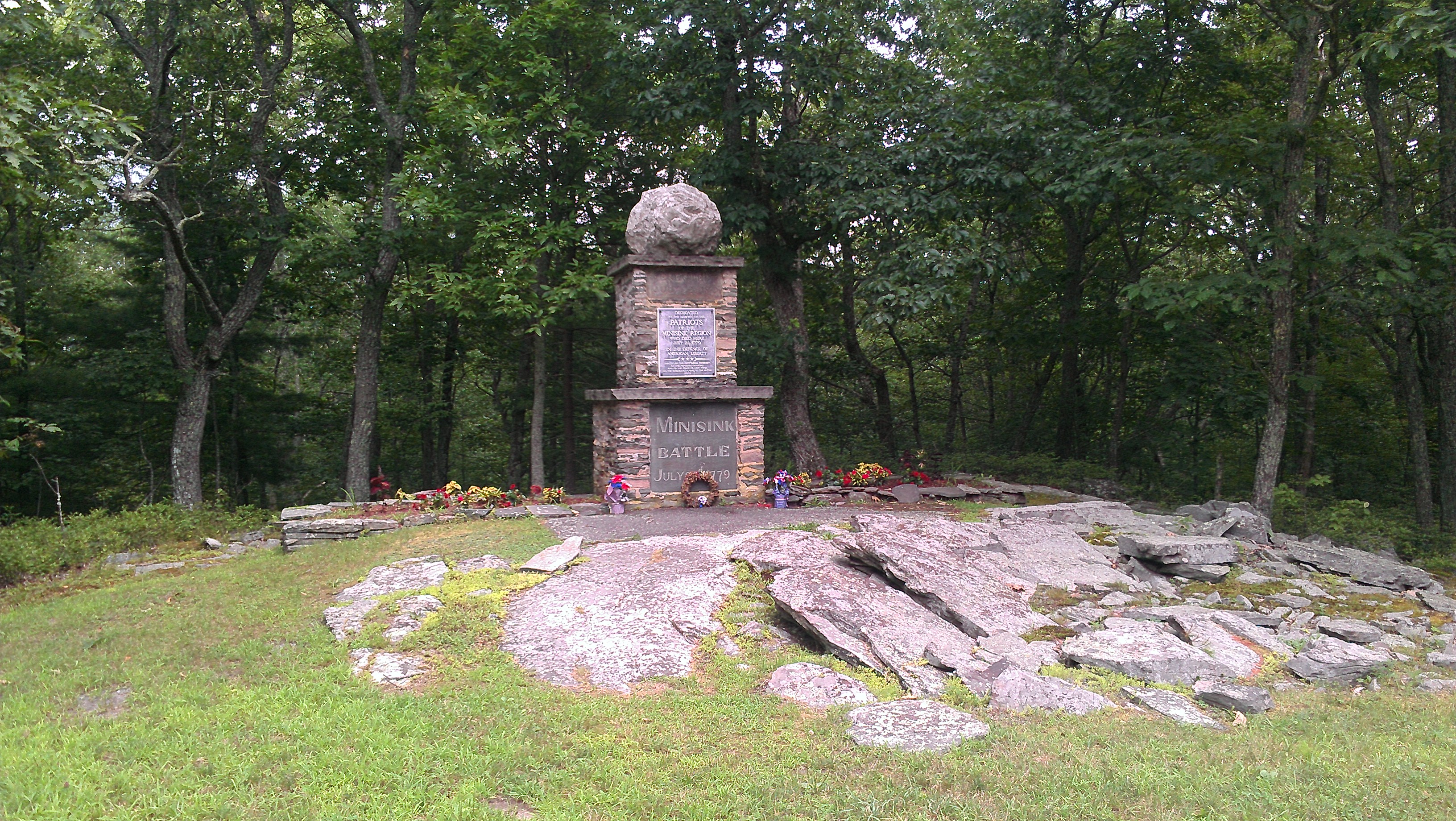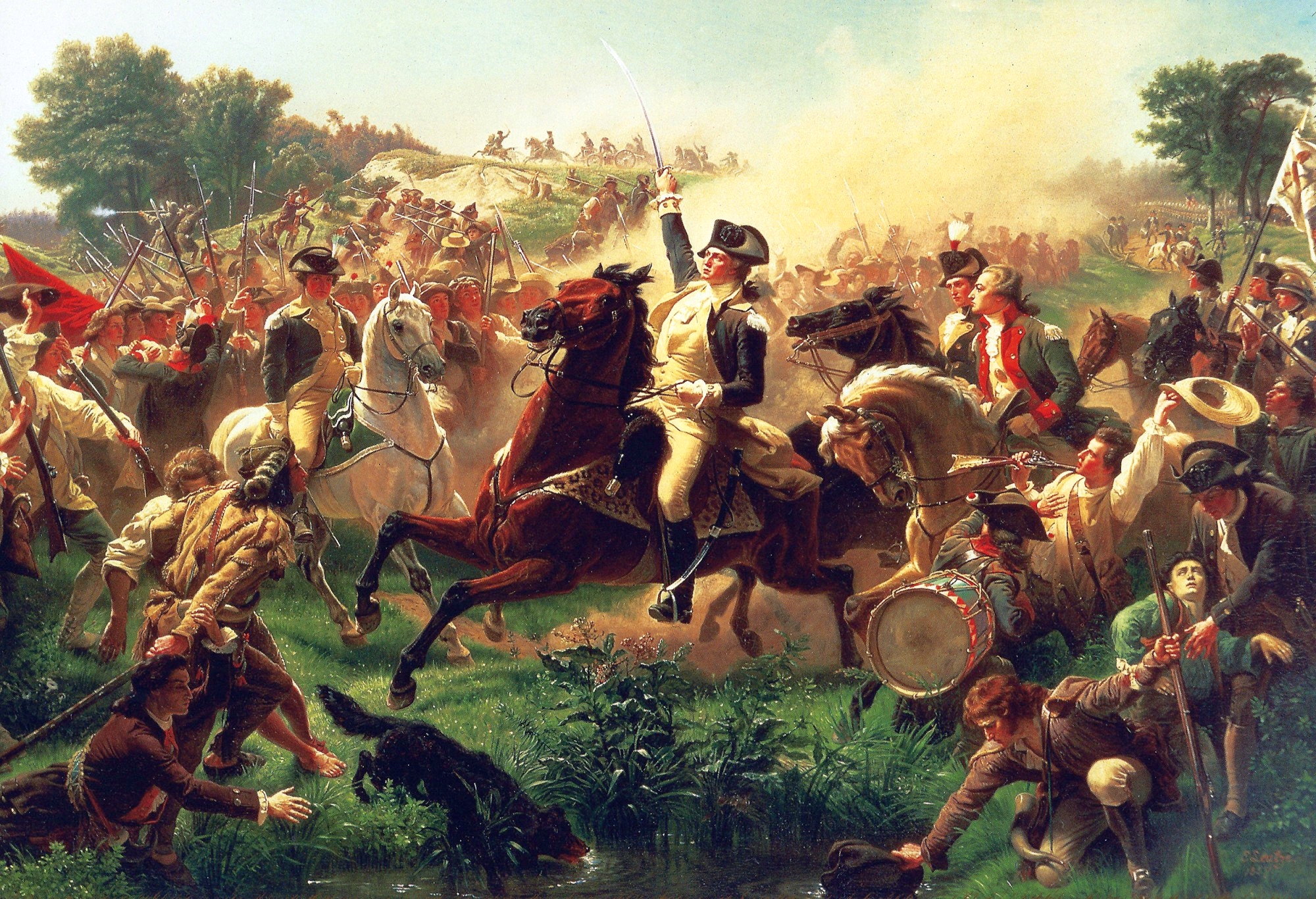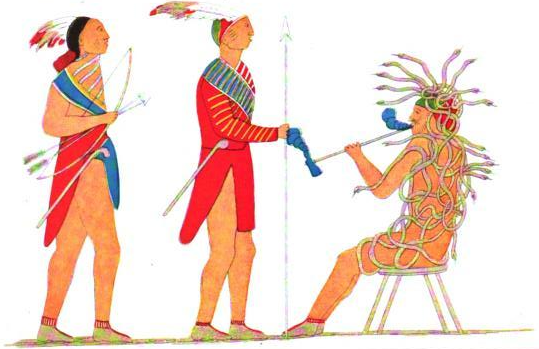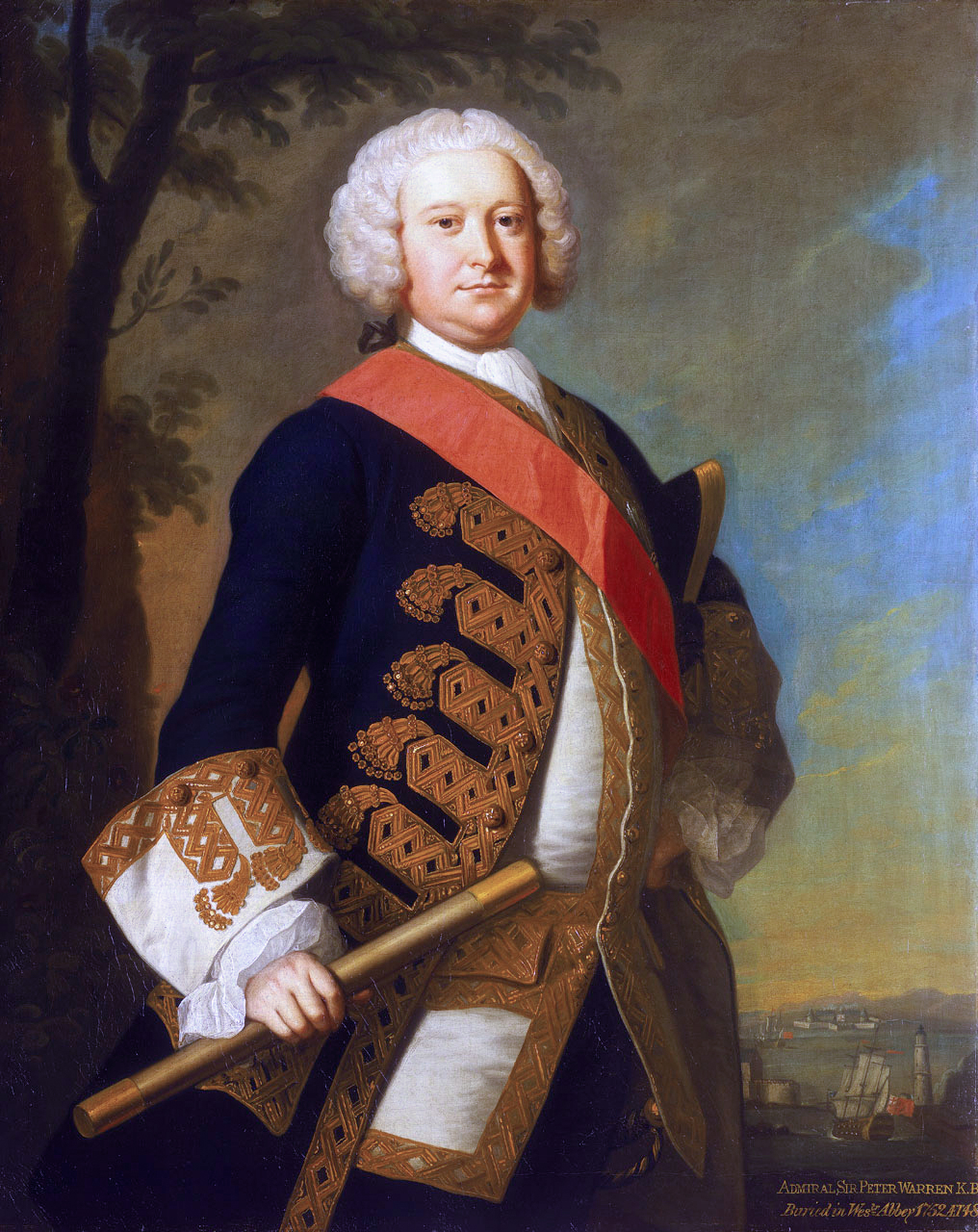|
Oquaga
Onaquaga (also spelled many other ways) was a large Iroquois village, located on both sides of the Susquehanna River near present-day Windsor, New York. During the American Revolutionary War, the Continental Army destroyed it and nearby Unadilla in October 1778 in retaliation for British and Iroquois attacks on frontier communities. Population Onaquaga was originally home to members of the Oneida tribe, one of the Five Nations of the Iroquois Confederacy. The Iroquoian-speaking Tuscarora people joined in outlying settlements when they migrated north from South Carolina and became the Sixth Nation of the confederacy in 1722. In 1753, Nanticoke refugees from Virginia also moved into the village. That same year, Reverend Gideon Hawley established an Indian mission in the village. The establishment of the mission led to an increase in population of Christianized Indians living in and about the village, both those from the area and those who migrated from elsewhere (reference: Olde ... [...More Info...] [...Related Items...] OR: [Wikipedia] [Google] [Baidu] |
Battle Of Minisink
The Battle of Minisink was a battle of the American Revolutionary War fought at Minisink Ford, New York, on July 22, 1779. It was the only major skirmish of the Revolutionary War fought in the northern Delaware Valley. The battle was a decisive British victory, as the colonial militia was hastily assembled, ill-equipped, and inexperienced. Brant's raid Although British forces were largely concentrated on Manhattan Island, Joseph Brant, a Mohawk war chief and a captain in the British Army, was sent along with his Brant's Volunteers on a quest for provisions, to gather intelligence on the Delaware in the vicinity of Minisink, and to disrupt the upcoming American Sullivan Campaign. In June 1777, he received word that Kazimierz Pulaski's forces had moved into Pennsylvania, leaving much of the Minisink Valley undefended. Brant led his force of Loyalists and Iroquois raiders through the valley, with the goal of seizing supplies and demoralizing the colonists. With Brant's force ... [...More Info...] [...Related Items...] OR: [Wikipedia] [Google] [Baidu] |
Joseph Brant
Thayendanegea or Joseph Brant (March 1743 – November 24, 1807) was a Mohawk people, Mohawk military and political leader, based in present-day New York (state), New York, who was closely associated with Kingdom of Great Britain, Great Britain during and after the American Revolution. Perhaps the Native Americans in the United States, Native American of his generation best known to the Americans and British, he met many of the most significant Anglo-American people of the age, including both George Washington and George III of the United Kingdom, King George III. While not born into a hereditary leadership role within the Iroquois, Iroquois League, Brant rose to prominence due to his education, abilities, and connections to British officials. His sister, Molly Brant, was the wife of Sir William Johnson, 1st Baronet, Sir William Johnson, the influential British Superintendent of Indian Affairs in the province of New York. During the American Revolutionary War, Brant led Mo ... [...More Info...] [...Related Items...] OR: [Wikipedia] [Google] [Baidu] |
Gideon Hawley
Gideon Hawley (1727–1807) was a missionary to the Iroquois Indians in Massachusetts and on the Susquehanna River in New York. Biography He was born in the Stratfield section of Stratford, now Bridgeport, Connecticut, in New England on November 5, 1727. The son of Gideon Hawley and Hannah Bennett who was the daughter of Lieutenant James Bennett. Hawley's mother died at his birth and his father died three years later. He was the grandson of Ephraim and Sarah (Welles) Hawley from Trumbull. He was the great grandson of Joseph Hawley (Captain), first of the Hawley name to come to America in 1629, and was twice great grandson of Thomas Welles Governor of the Colony of Connecticut. He married Lucy Fessenden, second daughter of Reverend Benjamin Fessenden (Harvard 1718) and Rebecca (Smith) Fessenden, of Sandwich. They had three sons and two daughters. Lucy died December 25, 1777 at 50. Gideon married again to Mrs. Elizabeth Burchard, widow of Captain David Burchard of Nantucket, on O ... [...More Info...] [...Related Items...] OR: [Wikipedia] [Google] [Baidu] |
William Butler (colonel)
Colonel William Butler (died 1789) was a Pennsylvania officer during the American Revolutionary War, known for his leadership in the Battle of Monmouth, the burning of the Indian villages at Unadilla and Oquaga, and in the Sullivan-Clinton Expedition. Butler's exact year of birth is unknown, but he was probably born in the mid-1740s. His family emigrated from Ireland sometime before 1760 and settled in Cumberland County, Pennsylvania. In the late 1760s he worked as a frontier fur trader near Pittsburgh with his brother Richard. He was commissioned a lieutenant colonel in the Continental Army upon the formation of the 4th Pennsylvania Regiment on October 25, 1776. He was retired from the Army on January 1, 1783. He was an original member of the Society of the Cincinnati. Family Butler was the second of five brothers who served as officers in the American Revolution. The two oldest brothers were born in Ireland. The brothers were, from oldest to youngest: *Richard (1743–17 ... [...More Info...] [...Related Items...] OR: [Wikipedia] [Google] [Baidu] |
Iroquois
The Iroquois ( or ), officially the Haudenosaunee ( meaning "people of the longhouse"), are an Iroquoian-speaking confederacy of First Nations peoples in northeast North America/ Turtle Island. They were known during the colonial years to the French as the Iroquois League, and later as the Iroquois Confederacy. The English called them the Five Nations, comprising the Mohawk, Oneida, Onondaga, Cayuga, and Seneca (listed geographically from east to west). After 1722, the Iroquoian-speaking Tuscarora people from the southeast were accepted into the confederacy, which became known as the Six Nations. The Confederacy came about as a result of the Great Law of Peace, said to have been composed by Deganawidah the Great Peacemaker, Hiawatha, and Jigonsaseh the Mother of Nations. For nearly 200 years, the Six Nations/Haudenosaunee Confederacy were a powerful factor in North American colonial policy, with some scholars arguing for the concept of the Middle Ground, in that Europe ... [...More Info...] [...Related Items...] OR: [Wikipedia] [Google] [Baidu] |
Pre-historic Cities In The United States
Prehistory, also known as pre-literary history, is the period of human history between the use of the first stone tools by hominins 3.3 million years ago and the beginning of recorded history with the invention of writing systems. The use of symbols, marks, and images appears very early among humans, but the earliest known writing systems appeared 5000 years ago. It took thousands of years for writing systems to be widely adopted, with writing spreading to almost all cultures by the 19th century. The end of prehistory therefore came at very different times in different places, and the term is less often used in discussing societies where prehistory ended relatively recently. In the early Bronze Age, Sumer in Mesopotamia, the Indus Valley Civilisation, and ancient Egypt were the first civilizations to develop their own scripts and to keep historical records, with their neighbors following. Most other civilizations reached the end of prehistory during the following Iron Age. T ... [...More Info...] [...Related Items...] OR: [Wikipedia] [Google] [Baidu] |
1778 Disestablishments In The United States
Events January–March * January 18 – Third voyage of James Cook: Captain James Cook, with ships HMS ''Resolution'' and HMS ''Discovery'', first views Oahu then Kauai in the Hawaiian Islands of the Pacific Ocean, which he names the ''Sandwich Islands''. * February 5 – **South Carolina becomes the first state to ratify the Articles of Confederation. ** **General John Cadwalader shoots and seriously wounds Major General Thomas Conway in a duel after a dispute between the two officers over Conway's continued criticism of General George Washington's leadership of the Continental Army.''Harper's Encyclopaedia of United States History from 458 A. D. to 1909'', ed. by Benson John Lossing and, Woodrow Wilson (Harper & Brothers, 1910) p166 * February 6 – American Revolutionary War – In Paris, the Treaty of Alliance and the Treaty of Amity and Commerce are signed by the United States and France, signaling official French recognition of the new rep ... [...More Info...] [...Related Items...] OR: [Wikipedia] [Google] [Baidu] |
Iroquois Populated Places
The Iroquois ( or ), officially the Haudenosaunee ( meaning "people of the longhouse"), are an Iroquoian Peoples, Iroquoian-speaking Confederation#Indigenous confederations in North America, confederacy of First Nations in Canada, First Nations peoples in northeast North America/Turtle Island (Native American folklore), Turtle Island. They were known during the Colonial history of the United States, colonial years to the French as the Iroquois League, and later as the Iroquois Confederacy. The English people, English called them the Five Nations, comprising the Mohawk people, Mohawk, Oneida people, Oneida, Onondaga people, Onondaga, Cayuga people, Cayuga, and Seneca people, Seneca (listed geographically from east to west). After 1722, the Iroquoian-speaking Tuscarora people from the southeast were accepted into the confederacy, which became known as the Six Nations. The Confederacy came about as a result of the Great Law of Peace, said to have been composed by The Great Peacem ... [...More Info...] [...Related Items...] OR: [Wikipedia] [Google] [Baidu] |
Ouaquaga Lenticular Truss Bridge
Ouaquaga Lenticular Truss Bridge is a historic lenticular truss bridge located at Ouaquaga in the towns of Windsor and Colesville in Broome County, New York. It was constructed in 1888 and spans the Susquehanna River. It is composed of two identical through trusses with an overall length of . It was constructed by the Berlin Iron Bridge Co. of East Berlin, Connecticut. ''See also:'' The bridge was closed to vehicular traffic in 2008 when a new bridge was built alongside it. The old bridge remains open for pedestrian use. It was listed on the National Register of Historic Places in 2003. See also *List of bridges documented by the Historic American Engineering Record in New York (state) *South Washington Street Parabolic Bridge South Washington Street Parabolic Bridge is a historic Lenticular truss bridge located at Binghamton in Broome County, New York. It was constructed in 1886 and spans the Susquehanna River. It is composed of three identical through trusses with an ..., a ... [...More Info...] [...Related Items...] OR: [Wikipedia] [Google] [Baidu] |
Sir William Johnson
Sir William Johnson, 1st Baronet of New York ( – 11 July 1774), was a British Army officer and colonial administrator from Ireland. As a young man, Johnson moved to the Province of New York to manage an estate purchased by his uncle, Royal Navy officer Peter Warren, which was located in territory of the Mohawk, one of the Six Nations of the Iroquois League, or ''Haudenosaunee''. Johnson learned the Mohawk language and Iroquois customs, and was appointed the British agent to the Iroquois. Because of his success, he was appointed in 1756 as British Superintendent of Indian Affairs for all the northern colonies. Throughout his career as a British official among the Iroquois, Johnson combined personal business with official diplomacy, acquiring tens of thousands of acres of Native land and becoming very wealthy. Johnson commanded Iroquois and colonial militia forces against the French and their allies during the French and Indian War, the North American theater of the Seven Year ... [...More Info...] [...Related Items...] OR: [Wikipedia] [Google] [Baidu] |
George Washington
George Washington (February 22, 1732, 1799) was an American military officer, statesman, and Founding Father who served as the first president of the United States from 1789 to 1797. Appointed by the Continental Congress as commander of the Continental Army, Washington led the Patriot forces to victory in the American Revolutionary War and served as the president of the Constitutional Convention of 1787, which created the Constitution of the United States and the American federal government. Washington has been called the " Father of his Country" for his manifold leadership in the formative days of the country. Washington's first public office was serving as the official surveyor of Culpeper County, Virginia, from 1749 to 1750. Subsequently, he received his first military training (as well as a command with the Virginia Regiment) during the French and Indian War. He was later elected to the Virginia House of Burgesses and was named a delegate to the Continental Congress ... [...More Info...] [...Related Items...] OR: [Wikipedia] [Google] [Baidu] |
Southern Tier
The Southern Tier is a geographic subregion of the broader Upstate New York region of New York State, consisting of counties west of the Catskill Mountains in Delaware County and geographically situated along or very near the northern border of Pennsylvania. Definitions of the region vary widely, but generally encompass localities in counties surrounding the Binghamton and Elmira- Corning metropolitan areas. This region is bordered to the south by the Northern Tier of Pennsylvania and both these regions together are known as the Twin Tiers. Constituent counties The eight counties almost always included in the Southern Tier are: Less frequently included in the "Southern Tier" designation are Schuyler County, Yates County (the regional sentiment is stronger throughout the southern portions of Yates, such as the village of Dundee), Cortland County and Tompkins County; even more rarely, Chenango County; and far more rarely, Schoharie County and Otsego County. (The last thr ... [...More Info...] [...Related Items...] OR: [Wikipedia] [Google] [Baidu] |








